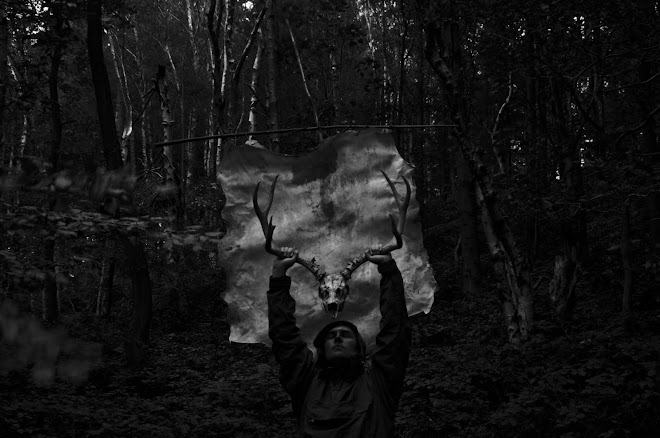


I took a trail back towards the pit-heap, collecting a long straight holly pole I had cut and stowed earlier in the day as I went. Grey squirrels darted up trees as I neared but no longer went through the noisy rigmarole of alarm displays, for which I was thankful. Fresh, bright white polypore fungi sprouted from birch stumps, looking smooth and streamlined and in the distance three more Roe darted away. They were a long way off and going in the opposite direction to me so I decided not to trail them. I was making my way back to a small glade I had seen a few hours earlier, a hollow on the north side of the pit heap where a young beech tree, some 20 meters high and maybe a meter round at the base grew over small birches and a carpet of sphagnum moss. The back wall of the hollow was thick with brambles and bracken but the space beneath the beech was so clear and tidy and it looked like a room had been set aside in the middle of the wood.
At the entrance to this secluded glade, on a pad of moss, was a classic sausage shaped fox casting – even down to the twisted pointy end. The scat consisted of three individual pieces, two lying side by side and a third several centimetres away. All were a dark grey colour, and approximately 8cm long. Although not in an elevated point in the landscape the scat had been left conspicuously out in the open, as if the former owner had been proud of their handiwork.
I set to breaking the castings open, starting with the piece set slightly apart from the other two. This was an incredibly tough and compressed cylinder that needed considerable effort to open. Once broken apart it became clear that this fox had the knack of catching grey squirrels on the ground, the whole scat was made up of thickly coiled and matted grey fur, obviously once belonging to a squirrel. This casting did not have any maggots, perhaps because it was so hard and compressed, or perhaps because there was too little meat waste contained within to attract the flies to lay. The other two pieces were slightly easier to break up, darker grey in colour and had some maggots, again the small pearly-grey grubs with the black heads that had predominated in the fox castings in Coldstream Wood, although they were fewer in number than were found in the earlier meat-rich droppings. Although evidently some days old judging by the maggot infestation the whole casting retained a strong musty smell.
Top: Classic sausage-shaped fox dropping, Scat # 2
Middle: Scat # 2 opened to reveal grey squirrel fur
Bottom: View of deposition site for Scat # 2

No comments:
Post a Comment